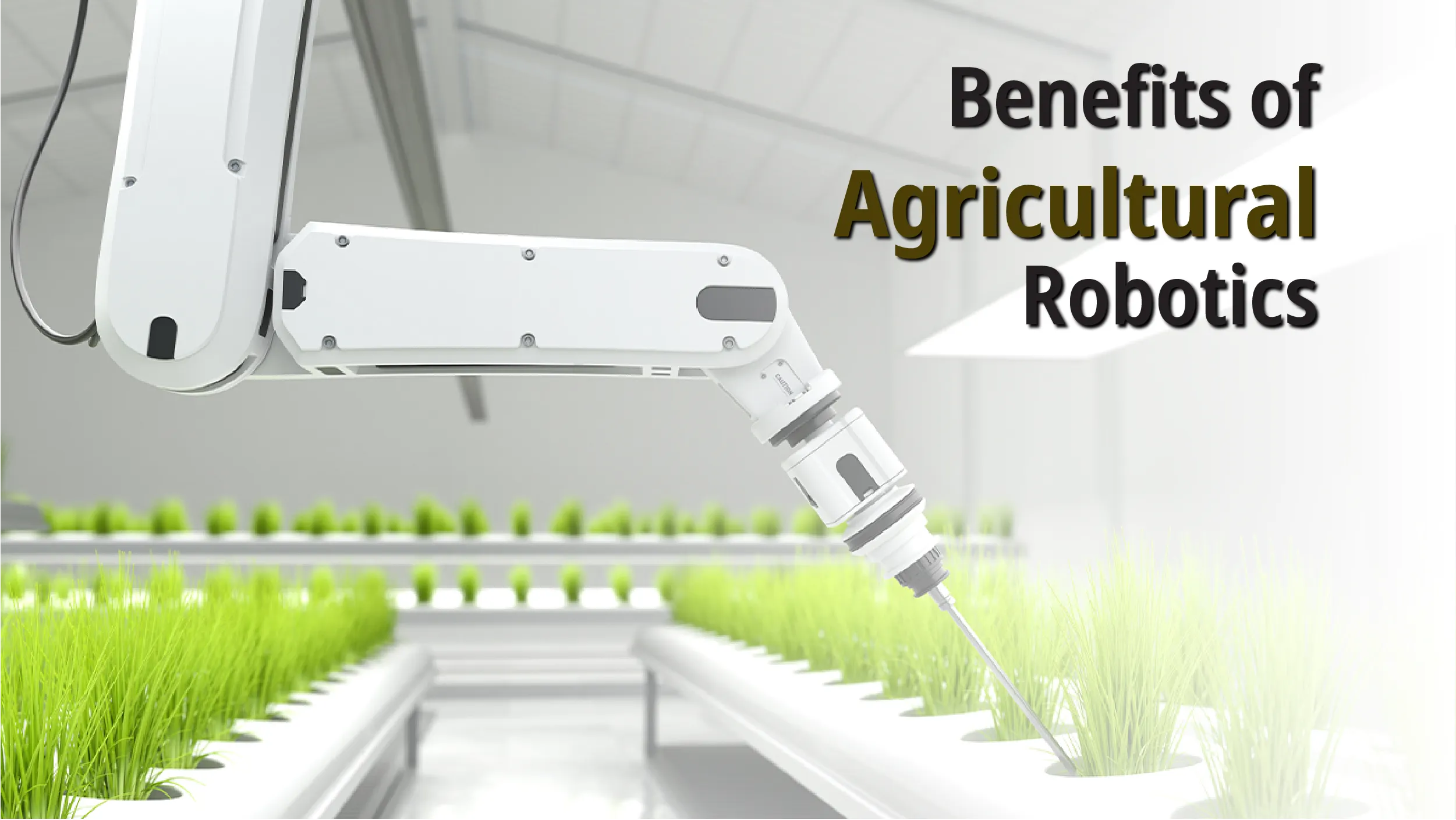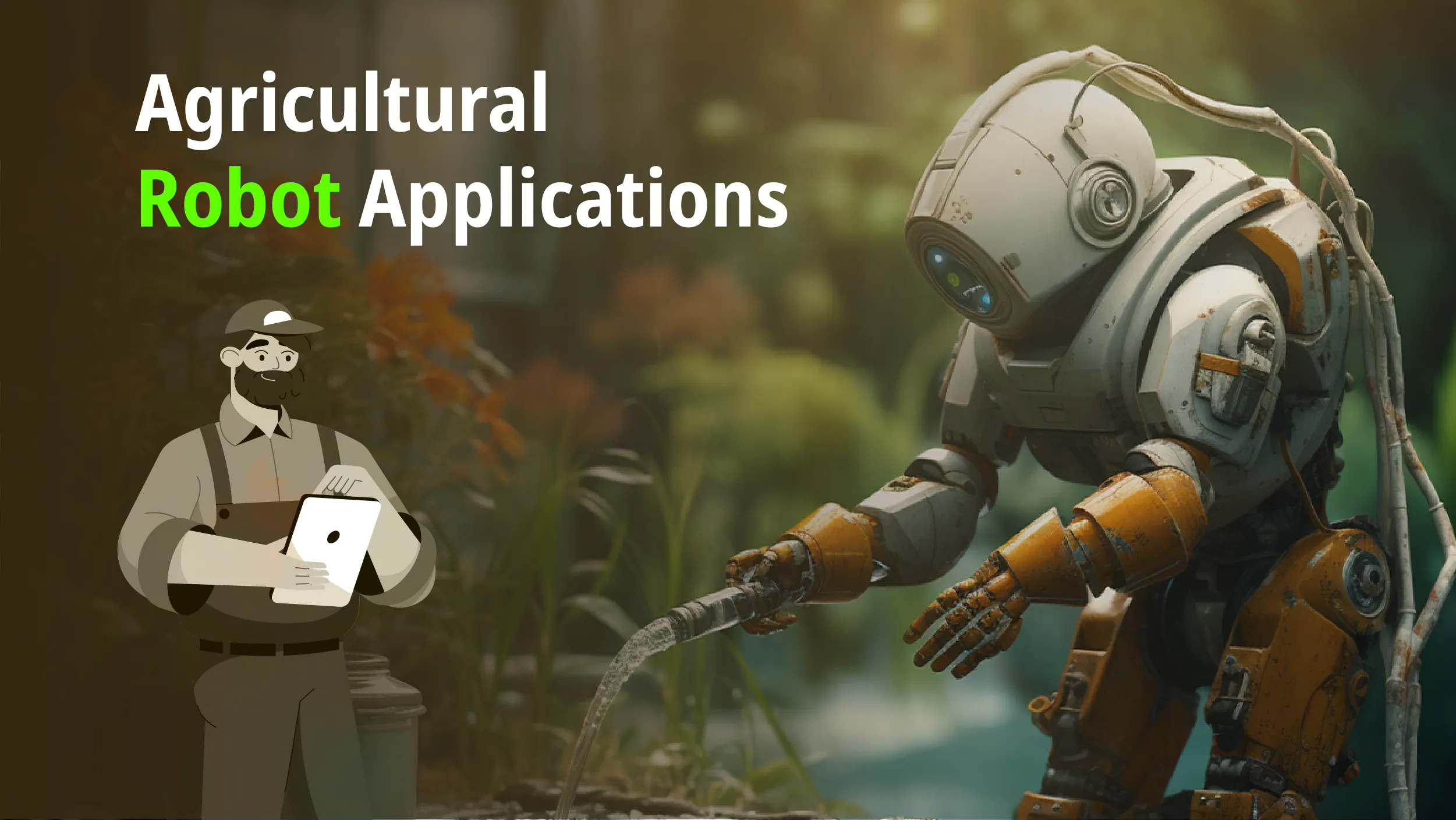The World Food Program, or WFP for short, estimates that 45% of people do not have enough food. All of this is happening at a time when farmers are dealing with an expensive and persistent labor shortage, and food consumption is predicted to increase dramatically as the world’s population rises from 7.7 billion to 9.7 billion people by the year 2050. This calls for a modern solution- agricultural robotics. In this blog post, we will discuss its benefits, disadvantages, future aspects, applications, etc. So, read on!
What is Agricultural Robotics?
The term “agricultural robotics” describes the use of automation and robots in various areas of agriculture and livestock farming. These technologies are revolutionizing the agricultural sector by providing creative answers to problems such as labor shortages, increasing productivity, and minimizing environmental impact.
Benefits of Agricultural Robotics

- Increased Efficiency: Agricultural robots can work faster and for longer periods without a reduction in productivity, leading to increased efficiency in various farming tasks such as food production, harvesting process, weeding, pruning, and crop maintenance.
- Precision and Accuracy: Robots equipped with advanced sensors and AI algorithms can perform tasks with high precision, ensuring accurate planting, targeted spraying of pesticides and fertilizers, and precise data collection for crop monitoring and analysis.
- Cost Reduction: By automating labor-intensive tasks, agricultural robots reduce the reliance on manual labor, potentially lowering production costs for farmers. They also optimize resource usage, such as applying herbicides and fertilizers with precision, reducing waste, and saving costs.
- Improved Crop Quality: The use of robots in harvesting and other agritech tasks can result in higher-quality produce. Robots can be programmed to handle delicate fruits and vegetables with care, minimizing damage and preserving the quality of the harvested crops.
- Sustainability and Environmental Impact: Agricultural robots enable more sustainable farming practices by reducing the use of agrochemicals, optimizing resource utilization, and minimizing waste. For example, robots can apply pesticides only to the plants that need them, reducing the overall use of chemicals.
- Addressing Labor Shortages: With the increasing challenges of labor shortages in agricultural operations, robots provide a solution by automating repetitive tasks and reducing the reliance on manual labor. This helps farmers overcome labor constraints and maintain productivity.
Also Read: Ultimate Guide to Sustainable Agriculture: Everything You Need to Know
Disadvantages of Agriculture Robots
- High Initial Investment: The cost of purchasing and implementing agricultural robots can be a significant barrier for many farmers, especially small and medium-sized operations. The initial investment required for acquiring the robots and necessary infrastructure can be substantial.
- Maintenance and Technical Complexity: Agricultural robots require regular maintenance and technical expertise to keep them running efficiently. This can add additional costs and complexity to the farming operation, requiring specialized skills and training.
- Job Displacement: The automation of certain tasks through agricultural robots can lead to job displacement for farm workers. As robots take over labor-intensive tasks, there is a potential impact on employment opportunities in the agricultural sector.
- Learning Curve: Operating and managing agricultural robots may require a learning curve. Farmers and workers need to become proficient in using these machines, especially if they are multi-functional and can perform various tasks simultaneously.
- Cultural and Emotional Impact: The introduction of robots in agriculture may change the traditional culture and emotional appeal associated with farming. The reliance on technology and automation can alter the human connection and experience typically associated with agricultural practices.
- Energy Consumption: Agricultural robots require energy to operate, and their energy consumption can be a concern. The energy requirements and associated costs need to be considered when implementing robotic systems on farms.
Agricultural Robot Applications

Agricultural robots automate repetitive and tedious tasks, enabling farmers to enhance overall production yields. Common uses for these robots include harvesting and picking, weed control, soil analysis, autonomous mowing, pruning, checking crop health seeding, spraying, thinning, phenotyping, sorting, packing, and utility platforms. Harvesting robots are particularly popular due to their precision and speed, which increase yield sizes and minimize waste.
However, automating these tasks can be challenging. For instance, a robot picking sweet peppers must navigate obstacles like dust, varying light, temperature changes, and wind. Advanced vision systems identify the pepper’s location and ripeness, while robotic arms must delicately handle the peppers without causing damage. Despite these difficulties, agricultural robots are increasingly used to improve production yields, helping farmers meet the growing food demand as available farmland decreases.
Future Outlook on Agricultural Robotics
The future of the agricultural robotics market holds immense potential as farmers increasingly recognize their benefits. With the ongoing challenges of labor shortages, the need for increased productivity, and growing concerns about sustainability, agricultural robots are poised to become integral to the industry. These robots will continue to evolve and become more autonomous, capable of performing a wide range of tasks independently, including planting, harvesting, weeding, and monitoring crops and livestock.
The integration of advanced technologies, such as artificial intelligence (AI), machine learning (ML), and Internet of Things (IoT), will enable robots to make data-driven decisions, adapt to changing environmental conditions, and optimize resource utilization. This will lead to more efficient and precise farming practices, reducing waste and increasing yields. Moreover, the future of agricultural robots will see significant developments in the realm of indoor farming and robotic greenhouses. These controlled environments allow for year-round production and are well-suited to the integration of robotics.




